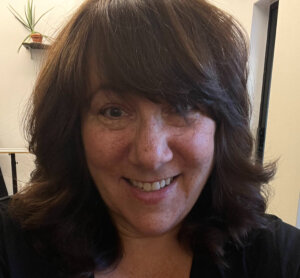On Not Confining Girls to a Pink Box
It seems the gender wars are trickling down…to preschool. This recent article in Slate is about a new preschool in California called “The Pink Academy” which features pink everything and no boys.
Preschool founder Donna Wood told The Santa Cruz Sentinel, in this article, “It’s about empowering girls, and they like pink right now.”
It sounds less empowering than limiting, if you ask me. Generalizations like Wood’s are troubling because they are so reductive. They offer too limited a notion of who girls are and what they can be interested in.
Here’s breaking news: Not every girl likes pink. I have two daughters: Girlchik enjoys playing with hairstyles, her close friendships are only with girls, and she often wears – you guessed it – pink. Rockerchik, as her sobriquet implies, is a girl of a different stripe. At least half of her closest friends are boys and have been since preschool, she has a persona more focused on being powerful than gentle, and – you guessed it again – she will not under almost any circumstance wear pink. Girlchik likes to wear pretty headbands. The only headgear Rockerchik will wear is a Yankees baseball cap put on backward.
To be sure there are studies showing that learning in girls-only or boys-only classrooms can be beneficial to the kids, because single-sex classrooms are theoretically free of cultural stereotypes about how each gender learns and allow students to be more concerned about doing their work than what the kid next to them might say.
There’s an article in today’s Wall Street Journal about a new study showing differences in brain development among 9- to 16-year-old boys and girls as they mature. But the piece also shows that the science on gender differences and what they may or may not mean is evolving.
I do think that there’s benefit to gendered spaces in some contexts. I like the girls-only and boys-only programs developed by Moving Traditions, which allow kids at the critical juncture of adolescence to have the safe space of a Rosh Chodesh group or Brotherhood group, to strengthen their relationships as they explore what it means to be Jewish women and men.
And I love the separate dancing at frum weddings; the sense of freedom I’ve seen in young women as they whirl around and around, not worrying about how their hair or dresses look as they surely would if there were young men watching…I appreciate what gendered space can bring.
But in school? Rather than separating boys and girls – anywhere from preschool through college – I’d like to see teachers prepared to teach to each student’s needs. Because each student is an individual personality, not just a boy or a girl. Teachers must be able to draw out and empower the shy, teach the bold how to be more sensitive to classroom dynamics, to create lessons which engage kids who need to be active and others who learn best concentrating in a quiet environment. Education is not one size fits all, and gender is only one aspect of personhood.
I also want my daughters and son to learn how to assert themselves in the classroom, as they must in life to be successful. The bifurcation into categories of boy and girl does our girls, and our boys as well, injustice by depriving them of the opportunity to get to know one another and to see the world not just through a gendered lens.
The Santa Cruz newspaper article says that The Pink Academy’s founder, “…will also teach monthly lessons featuring accomplished women.” Wood appears not to realize that boys benefit from learning about accomplished women too.
The Santa Cruz newspaper article says of Wood’s young daughter: “When Aspen was younger, she had a slate blue room and was happy to play with her brothers’ toys. But as she got a bit older and started picking out her own clothes, more and more pink appeared. ‘I don’t know where that comes from, but I don’t think it’s wrong,’ “ Wood said.
Of course preferring pink isn’t wrong. But it’s not the only right choice either. This month Aspen is into all things pink. Next month it might be purple, and the month after that, navy blue. It’s not just that little Aspen is into pink and her playmate might be into blue. It’s that Aspen herself might change to prefer something different in the future. And being confined to a pink box doesn’t present her with those possibilities.
When I was just a little older than Aspen, the video, songs and book of “Free to Be You and Me” were published by the Ms. Foundation for Women. They informed my early adolescence, and helped change the American cultural norm that confined men and women, and boys and girls, into terribly limiting gender roles.
In part because of developments like “The Pink Academy,” it now appears to be time for a “Free to Be” for the 21st century – so Donna Wood can see it and bring along her sons and daughter.

















